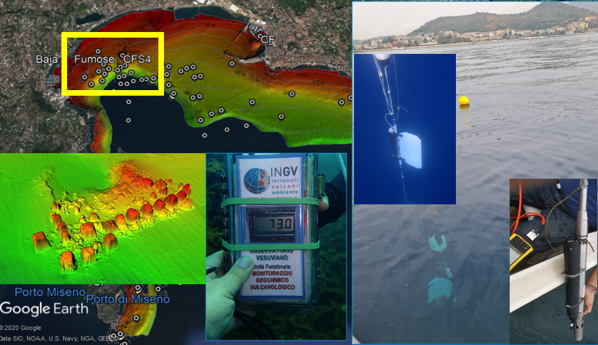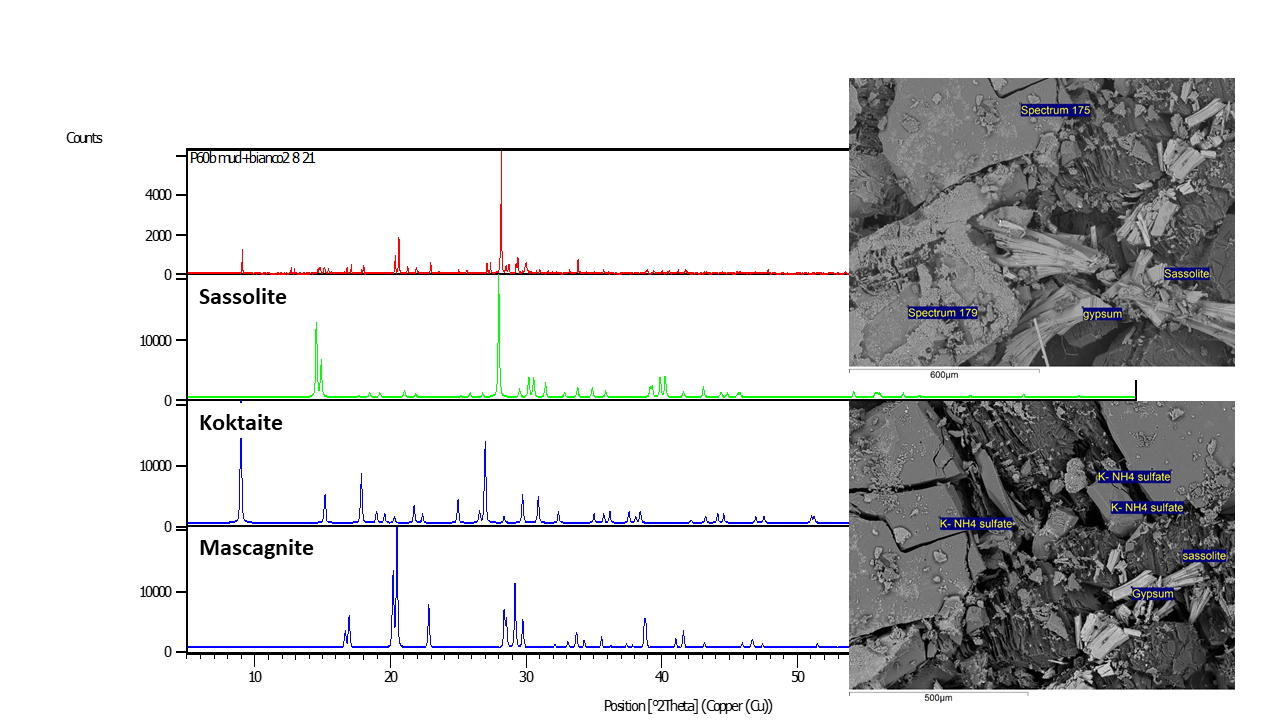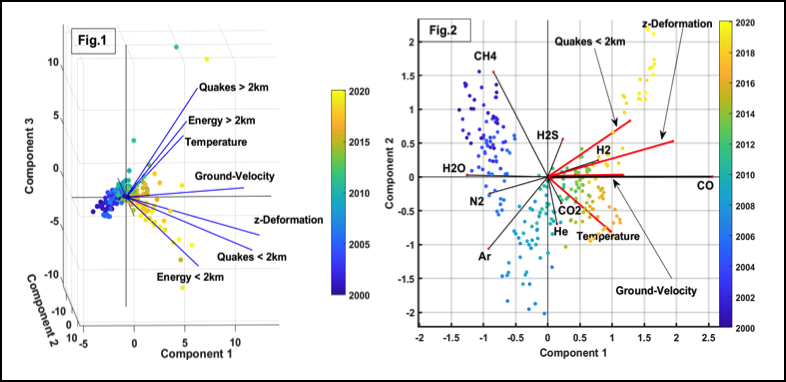 Marine activities for the characterization of the hot fluids emitted underwater at shallow depth
Marine activities for the characterization of the hot fluids emitted underwater at shallow depth
Mineralogical investigations for the characterization of the alteration settings at the surface discharge area by X-ray diffraction, BSD-electron microscopy and EDS-microanalyses
Principal Component Analyses of geochemical and geophysical parametersGeochemical characterization of fumarolic gases discharged in the submerged part of the Campi Flegrei caldera
Geochemical characterization of fumarolic gases discharged in the submerged part of the Campi Flegrei caldera
A significant effort will be done to extend the knowledge of the hydrothermal system to the submerged part of the Campi Flegrei caldera, through the mapping, sampling and geochemical characterization of the submarine fluid emissions at shallow depth of the Gulf of Pozzuoli. The origin of the fluids, the estimate of the thermodynamic conditions of the reservoir, and the flux of emitted fluids, will allow recognizing the areas of greatest interest for systematic monitoring that will contribute to the evaluation of the state of volcanic activity of the system. Laboratory analyses will include the light hydrocarbons (Propane-Propene) and the isotopic composition of carbon in the methane molecule in order develop new geochemical indicators useful for estimating the thermodynamic state of the hydrothermal system. Based on site conditions and logistics mineralizations at the submarine site will be investigated for characterization of phase assemblage and isotopic values of sulfur and oxygen in S-minerals.
The study area will include the “Secca delle Fumose”, where the energy release associated with the fluids emissions is comparable to the energy associated to the degassing process in the Solfatara - Pisciarelli area.
Minero-petrological investigations.
We have carried out (and work is ongoing): 1) field surveys in the Solfatara, Pisciarelli and Stufe di Nerone areas and sampling of the hydrothermal alteration products at different times; 2) OM, XRD, FTIR; SEM-EDS, (O, S) stable isotope analyses of samples; 3) thin sections and powders of some samples for future investigations under the microscope and, if possible, by whole-rock geochemistry; and 4) a first evaluation of obtained data matching a satisfactorily products achievement.
Statistical Data Analysis.
We are resampling the geochemical and geophysical data (to constant step). The geochemical dataset resampling has been made in the ilr-space, which is a transformation of the original data in an orthogonal space (to avoid the spurious collinearity effects). In addition, we are performing the PC analysis of the two group of variables (separately), the data clustering on filtered (by using the first 3 PCa) variables and a projection of the Geophysical data onto the Geochemical subspace of the first two PCa. We are describing the forecast changes through time of the historical evolution of the FFM in 2000-2021. We are performing a sensitivity analysis both on the spatial location of the GPS station and on the used seismic data.
